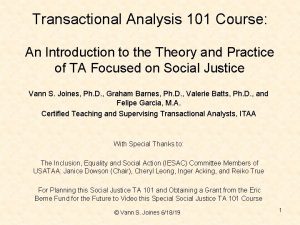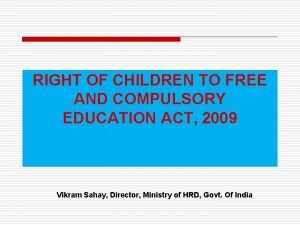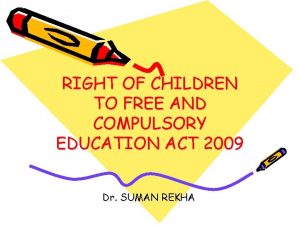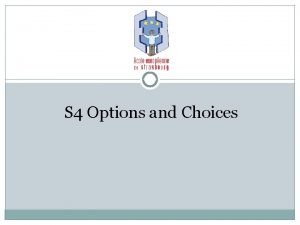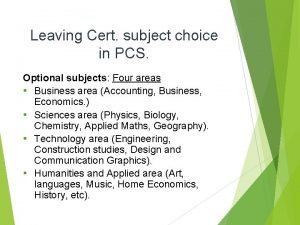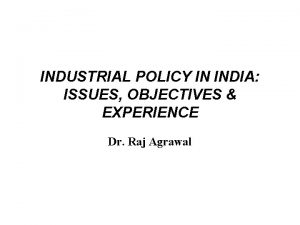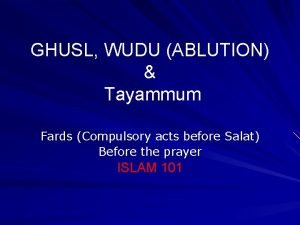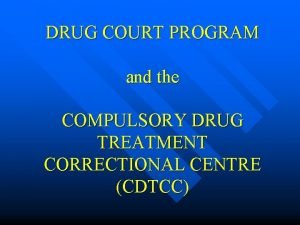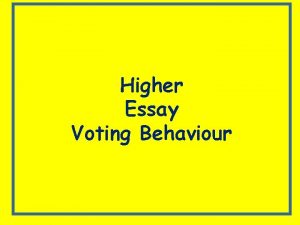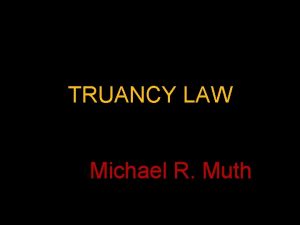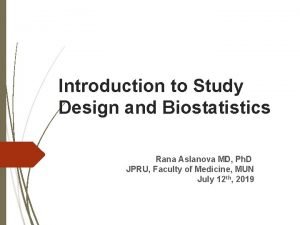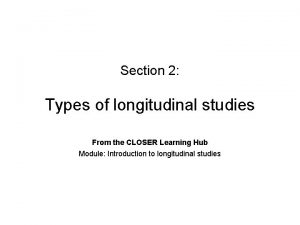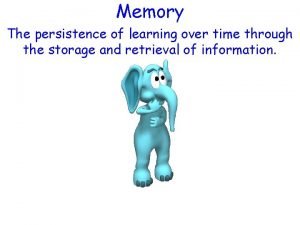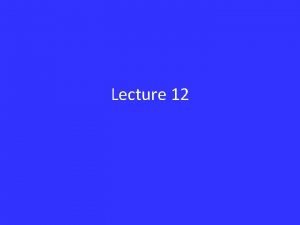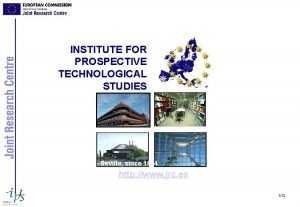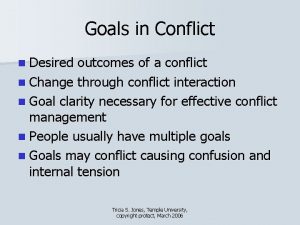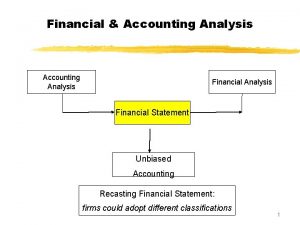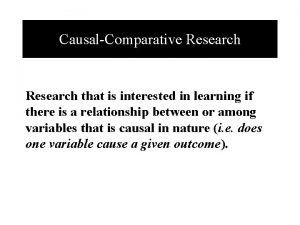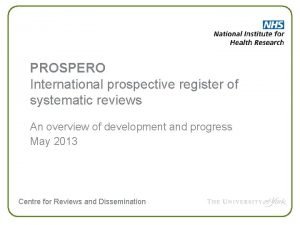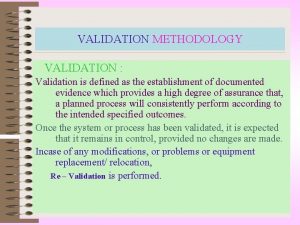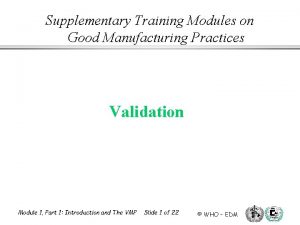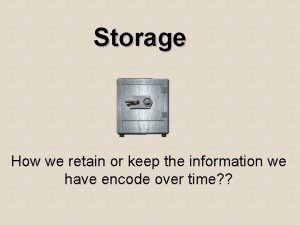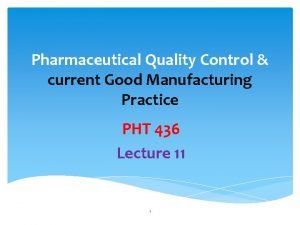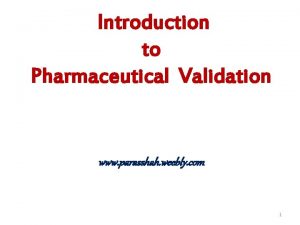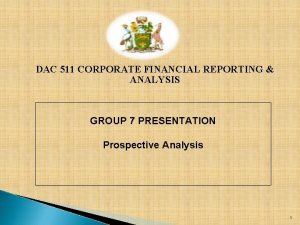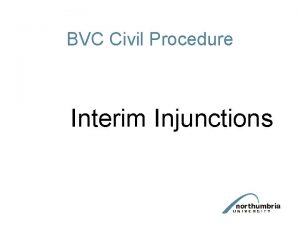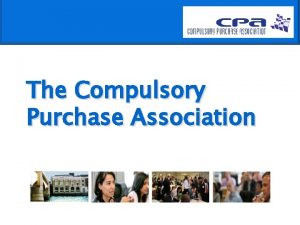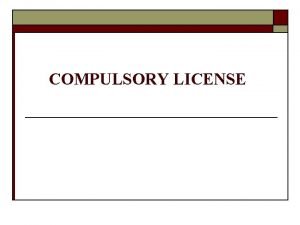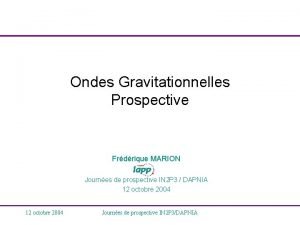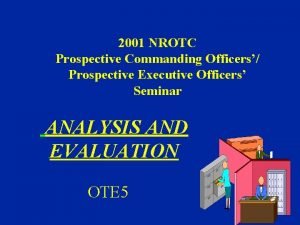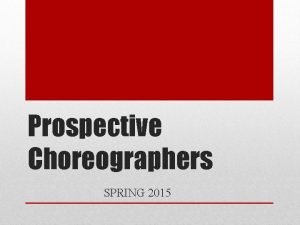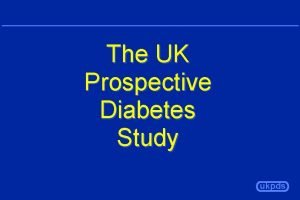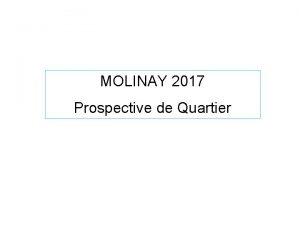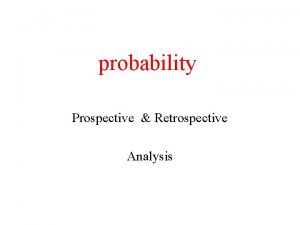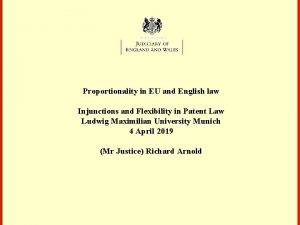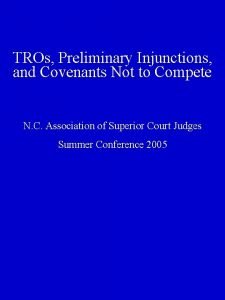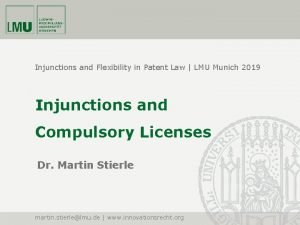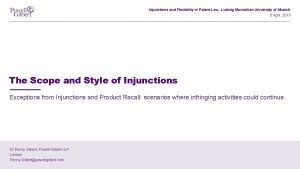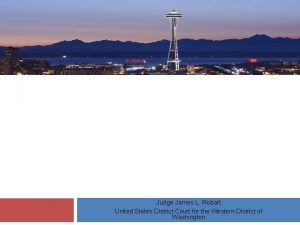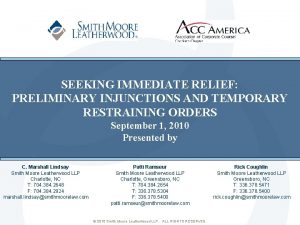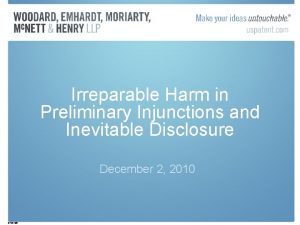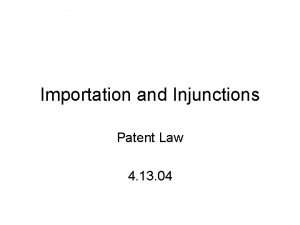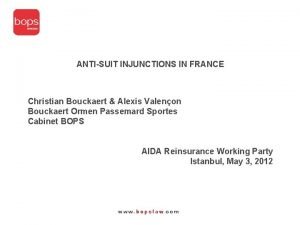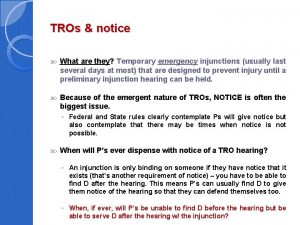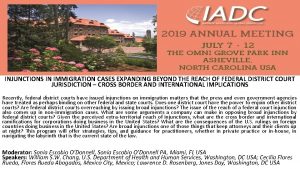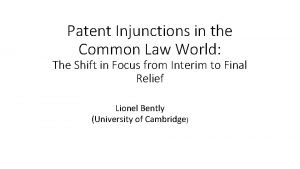Injunctions Compulsory Licenses and Other Prospective ReliefWhat the


































- Slides: 34

Injunctions, Compulsory Licenses, and Other Prospective Relief—What the Future Holds for Litigants AIPLA 2014 Spring Meeting Colin G. Sandercock* * These slides have been prepared for the AIPLA 2014 Spring Meeting and reflect only the personal views of the author and not the views of Perkins Coie LLP or any other lawyer of the firm, or any of its past, present and future clients.

Topics Equitable relief in patent litigation: § e. Bay v. Merc. Exchange and injunctions in its aftermath § Equitable procedures to mete out post-verdict relief § Federal Circuit guidance regarding compulsory licenses/ongoing royalty rates § Various district court methodologies for setting ongoing royalty rates

Pre-e. Bay v. Merc. Exchange § Prior to 2006, the Federal Circuit commonly awarded injunctions to patentees absent exceptional circumstances § “Because the right to exclude recognized in a patent is but the essence of the concept of property, ” the “general rule” was that a permanent injunction would issue as a matter of course once infringement and validity were found Merc. Exchange, LLC v. e. Bay, Inc. , 401 F. 3 d 1323, 1338 (Fed. Cir. 2005) (internal quotation omitted), vacated and remanded, 547 U. S. 388 (2006)

Pre-e. Bay v. Merc. Exchange § Successful patentees were likely to get an injunction § Samplings of district court cases from 2003 -2005 revealed that motions for a permanent injunction were successful between 84% and 94% of the time Eric Maughan, Protecting the Rights of Inventors: How Natural Rights Theory Should Influence the Injunction Analysis in Infringement Cases, 10 GEO. J. L. PUB POL’Y. 215 (2012)

e. Bay v. Merc. Exchange § SCOTUS replaced the broad CAFC injunction rule; a successful patentee must now satisfy the traditional, fourpart test, demonstrating that: § it has suffered an irreparable injury; § remedies available at law, such as monetary damages, are inadequate to compensate for that injury; § considering the balance of hardships between the plaintiff and defendant, a remedy in equity is warranted; and § the public interest would not be disserved by a permanent injunction 547 U. S. 388, 391 -392 (2006) (citations omitted)

Post-e. Bay v. Merc. Exchange § Frequency of permanent injunctions has declined § Between 2006 and 2013, district courts denied ~ 25% of motions for a permanent injunction § The pre-e. Bay percentage thus decreased from about 9% to 19%; § This 25% figure has remained steady over time Post e. Bay Permanent Injunction Rulings by District Courts – to 5/26/2013, Patstats. org (Mar. 17, 2014), http: //www. patstats. org/Patstats 2. html; see also Maughan, supra, at 224

Post-e. Bay v. Merc. Exchange (cont'd) § But, § there is some indication that the greater share of denied motions were brought by Non-Practicing Entities (“NPEs”) or “indirect” competitors; and § one early analysis indicated that while only 56% of post-e. Bay injunction motions were granted where the parties did not directly compete, direct competitors remained successful in seeking an injunction 92% of the time See Douglas Ellis et al. , The Economic Implications (and Uncertainties) of Obtaining Injunctive Relief After e. Bay v. Merc. Exchange, 17 FED. CIR. B. J. 437, 441 -44 (2008)

Alternative Prospective Relief: Ongoing Royalties/Compulsory Licenses § As the frequency of permanent injunctions has declined, there has been a growing emphasis on other forms of prospective relief § Pre-e. Bay — emphasis on the “right to exclude” § Post-e. Bay — emphasis on right to compensation § Specifically, courts are more likely to order compulsory licenses and ongoing royalties

Statutory Authority § Under 35 U. S. C. § 283, a court “may grant injunctions in accordance with the principles of equity to prevent the violation of any right secured by patent, on such terms as the court deems reasonable” § As part of these equitable powers, the Federal Circuit has acknowledged that courts may award monetary damages to compensate a patentee for future acts of infringement after the final judgment

Federal Circuit Decisions: Shatterproof Glass Corp. v. Libbey-Owens Ford Co. § In 1985, the Federal Circuit approved a district court’s award of a “ 5% royalty for compulsory patent license for continuing operations” § “[T]he amount of the royalty or its method of measurement” was not “clearly erroneous or an abuse of judicial discretion. ” Shatterproof Glass Corp. v. Libbey-Owens Ford Co. , 758 F. 2 d 613 (Fed. Cir. 1985)

Paice LLC v. Toyota Motor Corp. § “In most cases, where the district court determines that a permanent injunction is not warranted, the district court may wish to allow the parties to negotiate a license amongst themselves regarding future use of a patented invention before imposing an ongoing royalty. Should the parties fail to come to an agreement, the district court could step in to assess a reasonable royalty in light of the ongoing infringement. ” Paice LLC v. Toyota Motor Corp. , 504 F. 3 d 1293 (Fed. Cir. 2007)

Paice LLC v. Toyota Motor Corp. (cont. ) § An Award of a compulsory license is not a Seventh Amendment Violation § Monetary awards do not per se entitle a party to a jury trial § By itself, the grant of a compulsory license is not an abuse of discretion or constitutional violation, provided the license is properly supported by the record Id. at 1314 -16

Amado v. Microsoft Corp. § Jury awarded the patentee only $0. 04 per infringing unit; the district court concluded that the patentee was entitled to $0. 12 per unit for sales made during the period that an injunction was stayed § The district court justified this increase based on alleged willful infringement—i. e. , that sales after the judgment were willful even during the period the injunction was stayed 517 F. 3 d 1353 (Fed. Cir. 2008)

Amado v. Microsoft Corp. (cont. ) § “Prior to judgment, liability for infringement, as well as the validity of the patent, is uncertain, and damages are determined in the context of that uncertainty. Once a judgment of validity and infringement has been entered, however, the calculus is markedly different because different economic factors are involved. ” § But, because the district court had stayed the permanent injunction, the Federal Circuit found it was not appropriate to treat the situation as analogous to willful infringement § The Federal Circuit again remanded and took no position on the proper amount of the eventual award, noting only that the award should be at a minimum awarded by the jury (i. e. , $0. 04 per product), not to exceed the amount the patentee had requested

Telecordia Techs. Inc. v. Cisco Sys. § District court refused to enter any prospective relief for ongoing infringement—either an injunction or a compulsory license § Ordered the parties to negotiate a reasonable royalty for ongoing infringement, refusing to address prospective relief § Federal Circuit affirmed that the district court did not abuse its discretion by directing the parties to negotiate § If the parties were unable to reach an agreement, however, the district court should “step in, ” either to “assist or calculate on its own the appropriate rate” 612 F. 3 d 1365 (Fed. Cir. 2010).

Bard Peripheral Vascular, Inc. v. W. L. Gore and Assocs. , Inc. § Jury awarded 10% royalty rate for past infringement § District court denied injunction because medical device involved, but set ongoing royalty rates at 12. 5% to 20% § Should be higher than “free-market” rate set by the jury because of the parties’ changed legal status § Increased ongoing royalty supported because case was exceptional, and defendant continued post-verdict infringement § Federal Circuit upheld higher ongoing royalty as sound 670 F. 3 d 1171, 1192 (Fed. Cir. 2012)

Active. Video Networks, Inc. v. Verizon Communications, Inc. § The Federal Circuit vacated permanent injunction, but then approved the district court’s imposition of a high royalty to be paid during the eight-month “sunset period” before the injunction was to take effect, i. e. , 40% of Verizon’s profits § The Federal Circuit remanded the case to consider an appropriate royalty rate for the life of the patent, implying that the ongoing rate could be even higher than 40% of profits based on the outcome of the appeal. 694 F. 3 d 1312, 1341 -43 (Fed. Cir. 2012).

Whiteserve, LLC v. Computer Packages, Inc. § District court denied both a permanent injunction and an ongoing royalty § Federal Circuit; abuse of discretion: “[e]ven under this highly deferential standard of review, we find the trial court’s treatment of the questions of prospective relief inadequate” 694 F. 3 d 10, 34 -36 (Fed. Cir. 2012)

District Court Approaches: What Litigants Should Expect § Ongoing royalty determined by negotiation or mediation § Most courts order parties either to negotiate or mediate the issue in lieu of (or prior to) litigating the issue of ongoing royalties § Ongoing royalty determined by judge or jury § Approaches have varied in setting ongoing royalties

District Court Approaches § The traditional Georgia-Pacific test § The “modified” post-judgment Georgia-Pacific framework § The Amado approach § The Read Corp enhancement factors § The jury approach

The Traditional Georgia-Pacific Test § Parties’ changed circumstances based on the finding of infringement does not warrant a higher royalty rate § Jury asked to assume infringement and validity under traditional Georgia-Pacific analysis and therefore the jury assumed the post -verdict bargaining positions in reaching its verdict § Ongoing royalty and hypothetical negotiation bargaining positions are the same § Federal Circuit recently reversed willfulness finding but did not address appropriateness of the compulsory license rate University of Pittsburg v. Varian Medical Systems, Inc. , No. 08 cv 1307, 2012 WL 1436569, at *11 (W. D. Pa. Apr. 25, 2012), reversed-in-part, No. 2012 -1575, 2014 WL 1387144 (Fed. Cir. Apr. 10, 2014)

The “Modified” Post-Judgment Georgia. Pacific Framework § “The Federal Circuit has made it clear that damages for past infringement are separate and distinct from damages for future acts of infringement and may require different royalty rates given the change in the parties’ legal relationship, among other factors. ” Paice LLC v. Toyota Motor Corp. , 609 F. Supp. 2 d 620 (E. D. Tex. 2009)

The “Modified” Post-Judgment Georgia. Pacific Framework § First, ongoing infringement is essentially willful infringement; this factor, “along with the potential for enhancement, . . . change the ongoing royalty negotiation calculus” § Second, where the licensee continues to willfully infringe by choice, the cost of switching to an alternative design becomes a factor § Third, the infringer’s profit may be given less or little weight vis -à-vis the ongoing royalty imposed § Fourth, licenses on comparable technology may have less weight because those licensees not adjudged infringers

District Court Approaches: The “Modified” Post. Judgment Georgia-Pacific Framework (cont. ) § Courts that have adopted the modified Georgia-Pacific analysis have reached significantly higher royalty rates for post-verdict infringement than the rates set by the juries for pre-verdict infringement § Paice LLC on remand: court determined that a reasonable ongoing royalty rate was $98 per vehicle— nearly four times the $25 per-vehicle rate determined by the jury

The Amado Approach § Georgia Pacific factors ill-suited for post-verdict analysis § Determines royalty in a context prior to finding of infringement § Federal Circuit indicated that it was error to base ongoing royalty on jury’s pre-judgment award; different factors underlie the parties' new bargaining positions in post-verdict analysis § Court applying the Georgia Pacific factors runs the risk of skewing the analysis towards a pre-judgment framework § To ensure the proper test on remand, the Court bases its determination solely on the factors set forth by the Federal Circuit Amado v. Microsoft Corp. , No. SA CV 03 -342, 2008 WL 8641264, at *10 -11 (C. D. Cal. Dec. 4 2008)

The Amado Approach (cont. ) § Focus on “the effect that the finding of liability had on the parties’ bargaining stances and economic positions, as well as the evidence and arguments found material to the stay” § Specifically, the court considered: § the likelihood of success on appeal § the time and cost of designing around the patents § Improvement in plaintiff’s bargaining position § On remand, district court awarded ~ 3 X the jury’s rate § Amado approach has been adopted by several courts

The Read Corp Enhancement Factors: A Hybrid Approach § Some courts have engaged in a two-part analysis: § First, determine a reasonable royalty under the traditional or modified Georgia-Pacific factors § Second, enhance those damages using the traditional Read Corp. v. Portec, Inc. inquiry Read Corp. v. Portec, Inc. , 970 F. 2 d 816, 826 -27 (Fed. Cir. 1992)

The Read Corp Enhancement Factors (cont. ) § Affinity Laboratories of Texas LLC v. BMW North America § Court started with the jury’s $11 per unit rate as a base § It then enhanced the damages by 33% to account for the willfulness component of an ongoing infringement § Court deemed the traditional two-part damageenhancement analysis proper; only under “very unusual circumstances” would continuing infringement not constitute willful infringement 783 F. Supp. 2 d 891, 897 -905 (E. D. Tex. 2011)

Jury Determination—Outlier or Harbinger? § Judge Clark (EDTX) has had the jury prospectively determine the royalty rate for future infringement § Efficiency weighs in favor of presenting evidence on the issue of damages in one fell swoop, jury determined prospective damages even before determining past damages or judge considers an injunction Ariba Inc. v. Emptoris, Inc. , 567 F. Supp. 2 d 914 (E. D. Tex. 2008) (citing Amado, 517 F. 3 d 1353); see also Cummins-Allison Corp. v. SBM Co. , 584 F. Supp. 2 d 916 (E. D. Tex. 2008).

Lump-Sum Payments of Future Damages § Innogenetics, N. V. v. Abbott Laboratories: the jury awarded $7 million in damages on $12 million in sales § Only $1. 2 million represented a royalty for past infringement § Remaining $5. 8 million represented a “market entry fee” that was contemplated as a component of future sales § Given this lump-sum award of future damages, the Federal Circuit held that it was improper to issue a permanent injunction; remanded to enter a compulsory license for remaining future damages 512 F. 3 d 1363, 1380 (Fed. Cir. 2008)

Proving Ongoing Infringement; One Approach § EDTX addressed whether the adjudged infringer had modified its product such that it no longer infringed § Analogizing to cases on the scope of injunctions, the court reasoned that its post-verdict relief could encompass both the infringing product and “colorable variations thereof ” § The patentee was thus required to show only that the altered product was “no more than a ‘colorable variation’ on the infringing product” Creative Internet Advertising Corp. v. Yahoo! Inc. , 674 F. Supp. 2 d 847, 852 -56 (E. D. Tex. 2009).

Proving Ongoing Infringement; Different Approach § Xpert. Universe, Inc. v Cisco Systems: defendant claimed to have designed around the patent § Court denied Plaintiff’s request to order the parties to negotiate an ongoing royalty or hold an evidentiary hearing to address factual issues on new product § Ongoing royalty is an equitable remedy within the court’s discretion, and Plaintiff had not proven infringement No. 09 -157 -RGA, 2013 WL 6118447, at *14 (D. Del. Nov. 20, 2013)

Timing of Appeal § Mixed decisions on whether an adjudged infringer may appeal before court sets the compulsory license terms § Bard Peripheral Vascular, Inc. v. W. L. Gore & Assoc. Inc. , 346 Fed. App’x 580, 581 (Fed. Cir. 2009); Telecordia Techs. , Inc. , 612 F. 3 d 1365 § If decision is not reached, litigants may wish to move to sever this cause of action (or file a supplemental complaint) from issues related to liability and past damages § See, e. g. , Medtronic Vascular, Inc. v. Boston Scientific Corp. , No. 2 -06 -CV 78 (TJW), 2009 WL 175696, at *1 (E. D. Tex. Jan. 23, 2009); Virnet. X Inc. I, 925 F. Supp. 2 d at 847; Conceptus, Inc. v. Hologic, Inc. , No. C 09 -02280 WHA, 2012 WL 44064, at *4 (N. D. Cal. Jan. 9, 2012); z 4 Techs. , Inc. v. Microsoft Corp. , 434 F. Supp. 2 d 437 (E. D. Tex. 2007)

Questions or Comments Colin G. Sandercock Perkins Coie LLP 700 Thirteenth Street N. W. Washington, D. C. 20005 -3960 PHONE: 202. 434. 1630 FAX: 202. 654. 9673 E-MAIL: csandercock@perkinscoie. com
 Counter injunctions transactional analysis
Counter injunctions transactional analysis Chapter 1 the new jersey driver license system answers
Chapter 1 the new jersey driver license system answers Right of children to free and compulsory education
Right of children to free and compulsory education Salient features of rte 2009
Salient features of rte 2009 Four compulsory subjects
Four compulsory subjects Pcs compulsory subjects
Pcs compulsory subjects Industries requiring compulsory licensing *
Industries requiring compulsory licensing * Is dua e qunoot compulsory in witr hanafi
Is dua e qunoot compulsory in witr hanafi Fard of tayammum
Fard of tayammum Compulsory drug treatment correctional centre
Compulsory drug treatment correctional centre Importance of election essay
Importance of election essay Judge muth east stroudsburg pa
Judge muth east stroudsburg pa What is case series
What is case series Types of longitudinal studies
Types of longitudinal studies Retrospective cohort study
Retrospective cohort study Prospective memory examples
Prospective memory examples Longitudinal design
Longitudinal design Institute for prospective technological studies
Institute for prospective technological studies Prospective goals definition
Prospective goals definition Longitudinal prospective study
Longitudinal prospective study Iceberg phenomenon disease
Iceberg phenomenon disease Recasting financial statements
Recasting financial statements Prospective causal-comparative research
Prospective causal-comparative research Veille prospective
Veille prospective Prospero nihr
Prospero nihr Types of process validation
Types of process validation Prospective validation
Prospective validation Prospective memory psychology definition
Prospective memory psychology definition Concurrent validation
Concurrent validation What is validation
What is validation Sciglass database
Sciglass database Prospective analysis financial statements
Prospective analysis financial statements Self initiated other repair examples
Self initiated other repair examples Hát kết hợp bộ gõ cơ thể
Hát kết hợp bộ gõ cơ thể Slidetodoc
Slidetodoc
